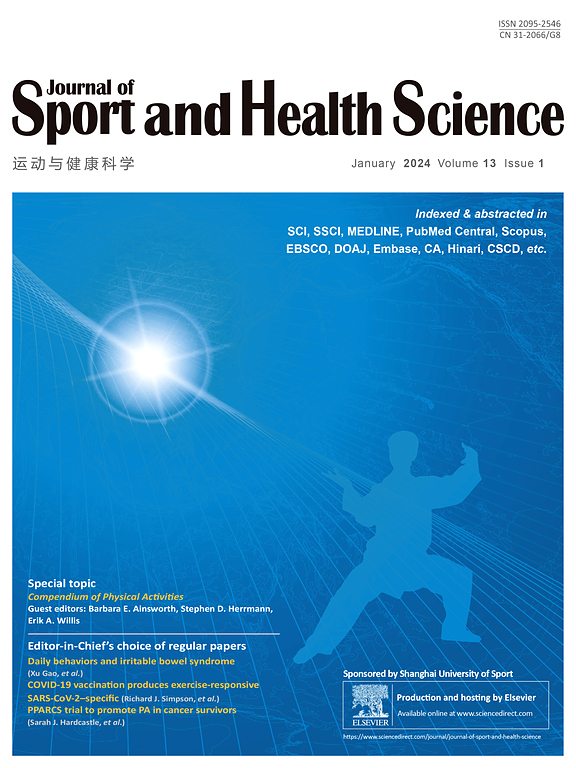ExerGeneDB: A physical exercise-regulated differential gene expression database.
IF 10.3
1区 医学
Q1 HOSPITALITY, LEISURE, SPORT & TOURISM
引用次数: 0
Abstract
BACKGROUND Exercise induces molecular changes that involve multiple organs and tissues. Moreover, these changes are modulated by various exercise parameters-such as intensity, frequency, mode, and duration-as well as by clinical features like gender, age, and body mass index (BMI), each eliciting distinct biological effects. To assist exercise researchers in understanding these changes from a comprehensive perspective that includes multiple organs, diverse exercise regimens, and a range of clinical features, we developed Exercise Regulated Genes Database (ExerGeneDB), a database of exercise-regulated differential genes. METHODS ExerGeneDB aggregated publicly available exercise-related sequencing datasets and subjected them to uniform quality control and preprocessing. The data, encompassing a variety of types, were organized into a specialized database of exercise-regulated genes. Notably, ExerGeneDB conducted differential analyses on this collected data, leveraging curated clinical information and accounting for important factors such as gender, age, and BMI. RESULTS ExerGeneDB has assembled 1692 samples from rats and mice as well as 4492 human samples. It contains data from various tissues and organs, such as skeletal muscle, blood, adipose tissue, intestine, heart, liver, spleen, lungs, kidneys, brain, spinal cord, bone marrow, and bones. ExerGeneDB features bulk Ribonucleic acid sequencing (RNA-seq) (including non-coding RNA (ncRNA) and protein-coding RNA), microarray (including ncRNA and protein-coding RNA), and single cell RNA-seq data. CONCLUSION ExerGeneDB compiles and re-analyzes exercise-related data with a focus on clinical information. This has culminated in the creation of an interactive database for exercise regulation genes. The website for ExerGeneDB can be found at: https://exergenedb.com.exgenedb:一个运动调节差异基因表达数据库。
运动诱导涉及多个器官和组织的分子变化。此外,这些变化受到各种运动参数(如强度、频率、模式和持续时间)以及临床特征(如性别、年龄和体重指数(BMI))的调节,每一种都引起不同的生物学效应。为了帮助运动研究人员从包括多器官、不同运动方案和一系列临床特征在内的全面角度了解这些变化,我们开发了运动调节基因数据库(exgenedb),这是一个运动调节差异基因数据库。方法sexergenedb收集了公开可用的运动相关测序数据集,并对其进行统一的质量控制和预处理。这些包含多种类型的数据被组织到一个专门的运动调节基因数据库中。值得注意的是,exgenedb对收集到的数据进行了差异分析,利用了精心策划的临床信息,并考虑了性别、年龄和BMI等重要因素。结果sexergenedb已经组装了1692个大鼠和小鼠样本以及4492个人类样本。它包含来自各种组织和器官的数据,如骨骼肌、血液、脂肪组织、肠、心、肝、脾、肺、肾、脑、脊髓、骨髓和骨骼。exgenedb具有大量核糖核酸测序(RNA-seq)(包括非编码RNA (ncRNA)和蛋白质编码RNA),微阵列(包括ncRNA和蛋白质编码RNA)和单细胞RNA-seq数据。结论:exgenedb以临床信息为重点,对运动相关数据进行整理和重新分析。这项研究最终建立了一个运动调节基因的交互式数据库。exgenedb的网站是:https://exergenedb.com。
本文章由计算机程序翻译,如有差异,请以英文原文为准。
求助全文
约1分钟内获得全文
求助全文
来源期刊

Journal of Sport and Health Science
SPORT SCIENCES-
CiteScore
18.30
自引率
1.70%
发文量
101
审稿时长
22 weeks
期刊介绍:
The Journal of Sport and Health Science (JSHS) is an international, multidisciplinary journal that aims to advance the fields of sport, exercise, physical activity, and health sciences. Published by Elsevier B.V. on behalf of Shanghai University of Sport, JSHS is dedicated to promoting original and impactful research, as well as topical reviews, editorials, opinions, and commentary papers.
With a focus on physical and mental health, injury and disease prevention, traditional Chinese exercise, and human performance, JSHS offers a platform for scholars and researchers to share their findings and contribute to the advancement of these fields. Our journal is peer-reviewed, ensuring that all published works meet the highest academic standards.
Supported by a carefully selected international editorial board, JSHS upholds impeccable integrity and provides an efficient publication platform. We invite submissions from scholars and researchers worldwide, and we are committed to disseminating insightful and influential research in the field of sport and health science.
 求助内容:
求助内容: 应助结果提醒方式:
应助结果提醒方式:


